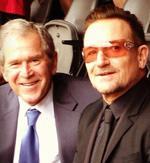 President Obama, British Prime Minister David Cameron, and Danish Prime Minister Helle Thorning-Schmidt were captured posing together while taking a selfie at Nelson Mandela’s memorial service. You’ve probably seen it. The photo is rocketing across cyberspace. It is not unusual for people to want capture extraordinary events. Mandela was extraordinary. Both the man and his life’s work are worth celebrating and commemorating. Even for heads of state, who are, after all, real people, too. It’s not all that surprising, therefore, that a selfie or two might be taken. What I want to know is, if it’s okay for Obama and friends to take a selfie, why were the ‘regular’ mourners kept from bringing in cameras and cell phones? Portraiture, image documentation used to be reserved for the elite, the rich and powerful, like royalty, heads of state and celebrities. The power of selfies is in how it democratizes photography. That power comes from technology: Digital images, front-facing lenses, and Internet connectivity.
President Obama, British Prime Minister David Cameron, and Danish Prime Minister Helle Thorning-Schmidt were captured posing together while taking a selfie at Nelson Mandela’s memorial service. You’ve probably seen it. The photo is rocketing across cyberspace. It is not unusual for people to want capture extraordinary events. Mandela was extraordinary. Both the man and his life’s work are worth celebrating and commemorating. Even for heads of state, who are, after all, real people, too. It’s not all that surprising, therefore, that a selfie or two might be taken. What I want to know is, if it’s okay for Obama and friends to take a selfie, why were the ‘regular’ mourners kept from bringing in cameras and cell phones? Portraiture, image documentation used to be reserved for the elite, the rich and powerful, like royalty, heads of state and celebrities. The power of selfies is in how it democratizes photography. That power comes from technology: Digital images, front-facing lenses, and Internet connectivity.
I don’t have any problem with Obama’s selfie in principle. The photo of the selfie (don’t you love the irony there) got some reaction, not all of it positive, but people in the public eye should know that their lives are shared more than the most prolific over-sharers on Facebook. But it underscores both a double standard and, more importantly, the potential for technology as a means of social control.
As I wrote in a previous post, there are lots of reasons why taking a selfie is a normal thing to do even under difficult circumstances, like memorial services. Selfies are quick, unplanned, somewhat discreet (unless you’re under the constant surveillance of the press), and capture a personal moment. They are not narcissistic. They are life affirming. Selfies document a moment that celebrates the process of life, freeing us from the tradition of capturing just the happy moments. The ease of the front-facing lens in a camera phone means you don’t have to take the time to line people up and get someone to hold a camera. They provide a freedom to ‘document at will’ what is meaningful even if fleeting. As we all know, life is full of more than Kodak moments. Many are complex, painful and interesting; some are mundane but perhaps personally interesting in their repetitiveness or dreariness. These ‘nontraditional photo moments’ form the fabric of life, they give it meaning and allow us to capture the rich tableau of life not just the bookmarks. From shared grief to unexpected moments, selfies allow us to take it all with us to revisit, make sense out of or even delete. The proliferation of digital technology has democratized this documentation and enabled us to celebrate the diversity of daily life.
Funerals of those we know signal a profound change in our social world. Funerals and memorial services also bring together an extraordinary range of people who want to commemorate and acknowledge the passing of someone that made impacted them. This is especially true for the memorial service celebrating the life of Nelson Mandela. Mandela made an indelible mark during his lifetime, showing himself to be tough, resilient, courageous and wise. It takes an extraordinary person with tremendous mental strength to go through years of abuse and prison and emerge with a passion for peace, not revenge; to have energy, a joy for life, a sense of humor and, most of all, the willingness to continue to dedicate himself to leading the way to a new South Africa.












